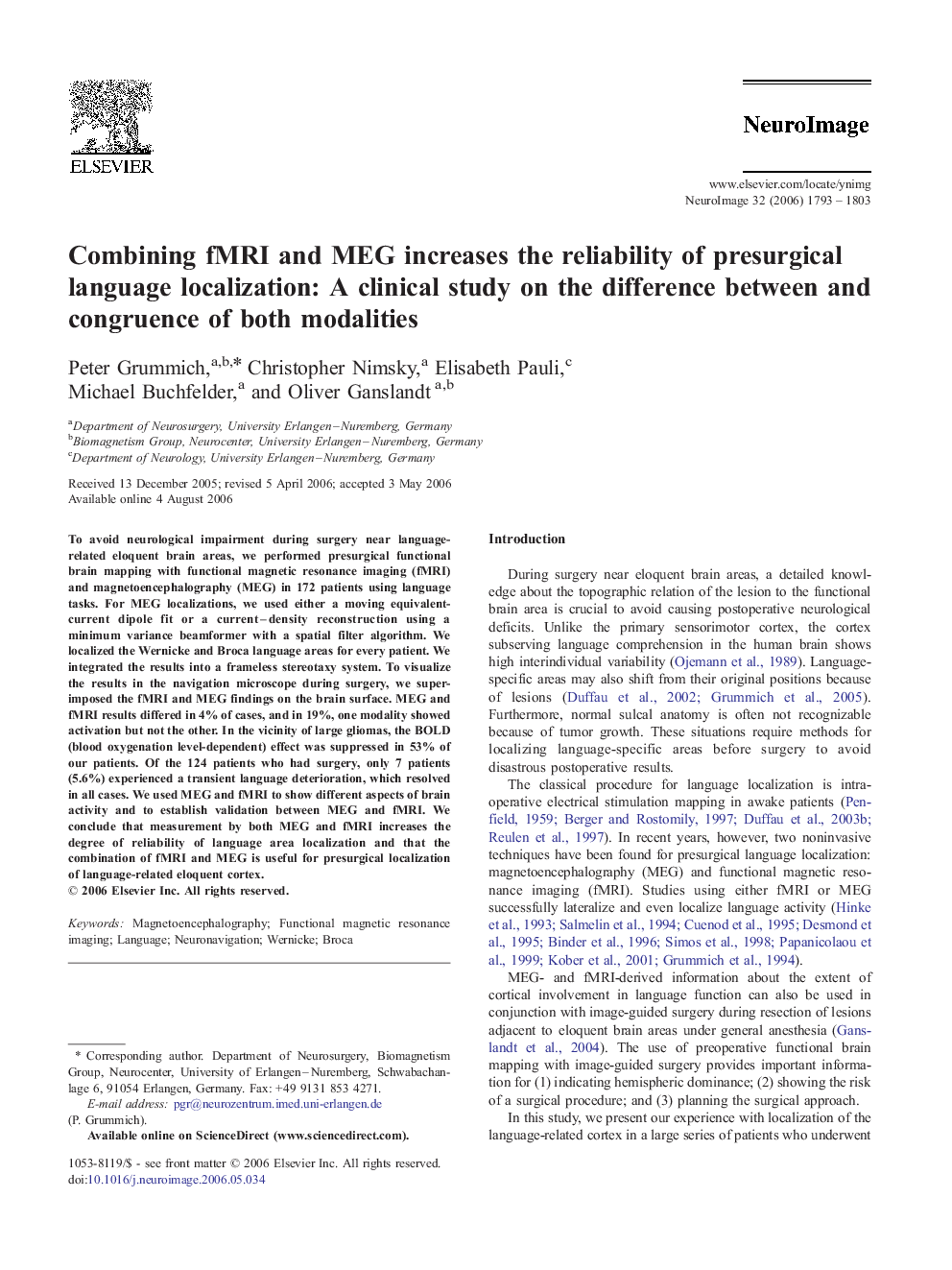| Article ID | Journal | Published Year | Pages | File Type |
|---|---|---|---|---|
| 3074109 | NeuroImage | 2006 | 11 Pages |
To avoid neurological impairment during surgery near language-related eloquent brain areas, we performed presurgical functional brain mapping with functional magnetic resonance imaging (fMRI) and magnetoencephalography (MEG) in 172 patients using language tasks. For MEG localizations, we used either a moving equivalent-current dipole fit or a current–density reconstruction using a minimum variance beamformer with a spatial filter algorithm. We localized the Wernicke and Broca language areas for every patient. We integrated the results into a frameless stereotaxy system. To visualize the results in the navigation microscope during surgery, we superimposed the fMRI and MEG findings on the brain surface. MEG and fMRI results differed in 4% of cases, and in 19%, one modality showed activation but not the other. In the vicinity of large gliomas, the BOLD (blood oxygenation level-dependent) effect was suppressed in 53% of our patients. Of the 124 patients who had surgery, only 7 patients (5.6%) experienced a transient language deterioration, which resolved in all cases. We used MEG and fMRI to show different aspects of brain activity and to establish validation between MEG and fMRI. We conclude that measurement by both MEG and fMRI increases the degree of reliability of language area localization and that the combination of fMRI and MEG is useful for presurgical localization of language-related eloquent cortex.
